Learn why the Tri Auto ZX2+ is truly Endo. Optimized. and discover how the right endo motor can help protect your patients from even the thinnest endo files breaking mid-treatment. You no longer need to rely on hand filing for difficult patency. Try using the Tri Auto ZX2+ instead!
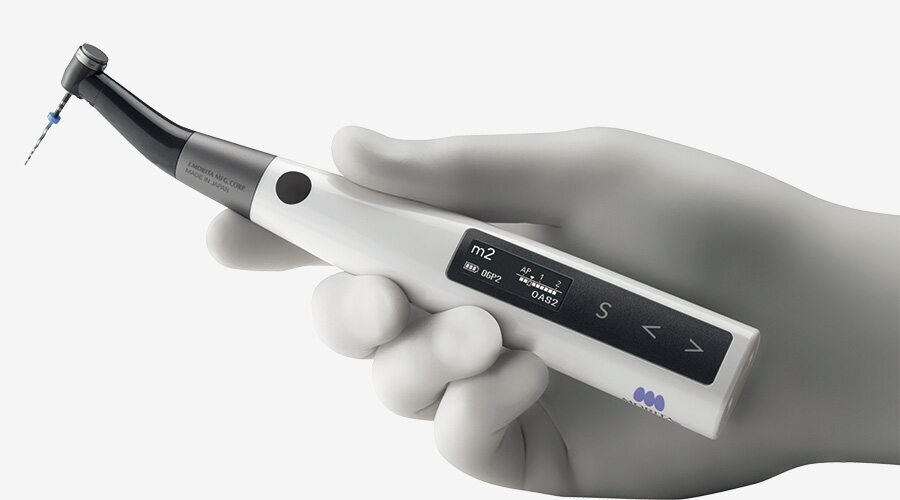
What makes the Tri Auto ZX2+ different from the Tri Auto ZX2?
The primary difference between the Tri Auto ZX2+ and its predecessor, the Tri Auto ZX2, is the addition of the Optimum Glide Path 2 (OGP2) mode. With its intelligent and innovative reciprocating motion, OGP2 mode was created to help you maintain the original root canal shape, regardless of whether it’s curved or narrow. OGP2 mode is all-encompassing, allowing you to perform patency, glide path, and shaping. Additionally, with no limits on file size or cutting direction, your current file system is compatible. From a #10 scout file to the widest sizes available, the Tri Auto ZX2+ handles any CW/CCW file all in one mode.
Reciprocating glide path instruments had greater cutting efficiency compared to those in continuous rotation (Pedullà et al., 2019). This endo motor is the best for doctors who want to focus on treatment rather than settings and allows them to finish treatments with higher efficiency and reduced possibility of file breakage.
Tri Auto ZX2+ OGP2 Endurance Test
Why do you need to try the Tri Auto ZX2+?
Dealing with fractured files during endodontic treatments is often not easy. OGP2 reduces file binding and, when it does occur, the chance of the file breaking in the canal is greatly reduced. This is due to the OGP2 mode’s intelligent reciprocating motion that prevents rotational deviations from accumulating.
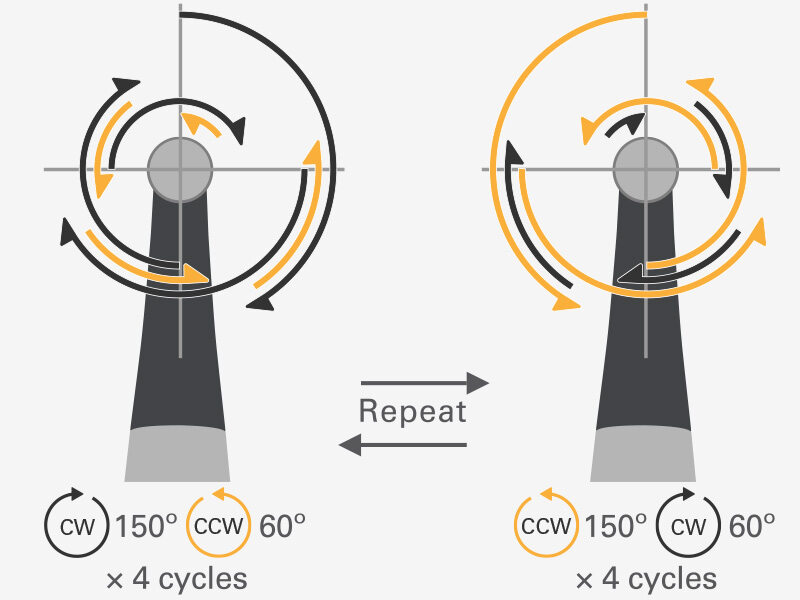 All work steps for root canal treatment can be done with just one motor, from the establishment of patency and glide path to final shaping. OGP2 mode allows you to take advantage of the capabilities of your favorite files, both reciprocating and rotary, throughout the process.
All work steps for root canal treatment can be done with just one motor, from the establishment of patency and glide path to final shaping. OGP2 mode allows you to take advantage of the capabilities of your favorite files, both reciprocating and rotary, throughout the process.
9 modes, which can be used for apex location (m0) or support during procedures like irrigation (m6) and intracanal medicament injection (m7), can be easily accessed from the built-in display. The Tri Auto ZX2+ stores settings, making it easy for general dentists to get started quickly and successfully. Endodontists can enjoy the various options for individual adaptation that the Tri Auto ZX2+ offers.
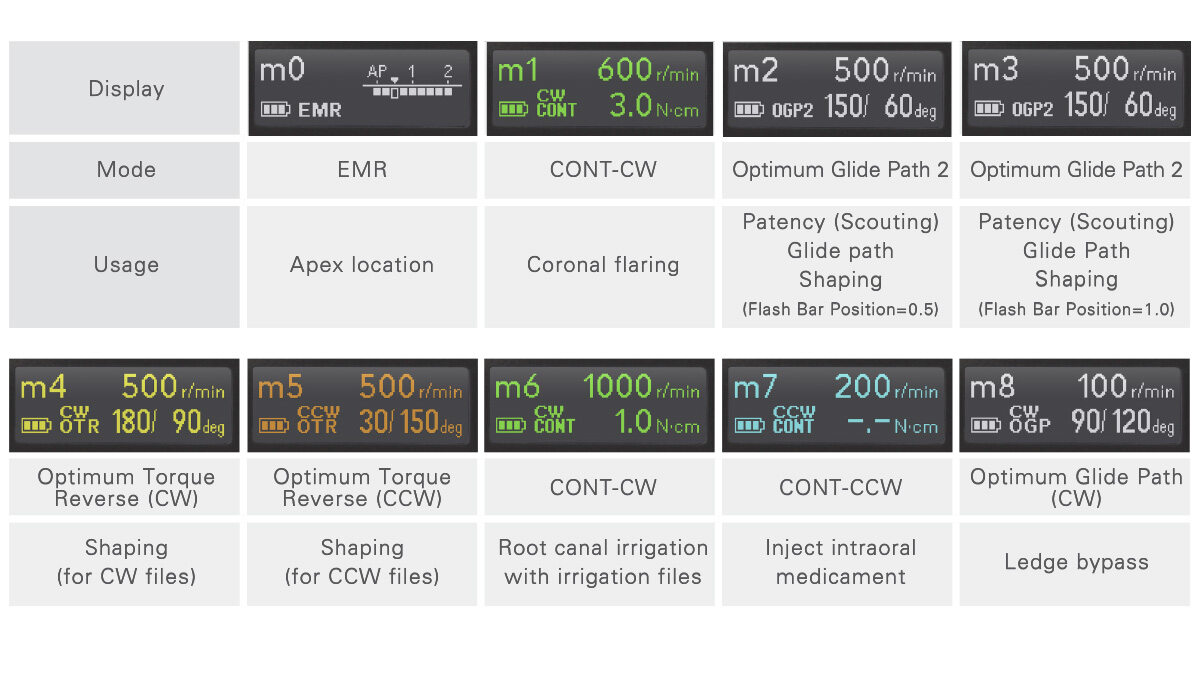
All about OGP2
OGP motion performed significantly less canal transportation (apical 3 mm) and file distortion during glide path establishment in constricted canals comparing to manual motion, while the centering ability between the two was similar (Liu et al., 2021). With its newly developed reciprocal motion, the OGP2 mode can even handle mechanical preparation of narrow or highly curved canals while maintaining their original shape.
Preparing the glide path is the first preparation step for a root canal treatment. Traditionally, glide paths are prepared by hand with stainless steel files. The Tri Auto ZX2+’s innovative OGP2 motion allows for safer glide path preparation while reducing fatigue. OGP reciprocating motion provides a safer and efficient clinical approach compared to traditional manual motion in glide path establishment with small files in constricted canals. (Liu et al., 2021)
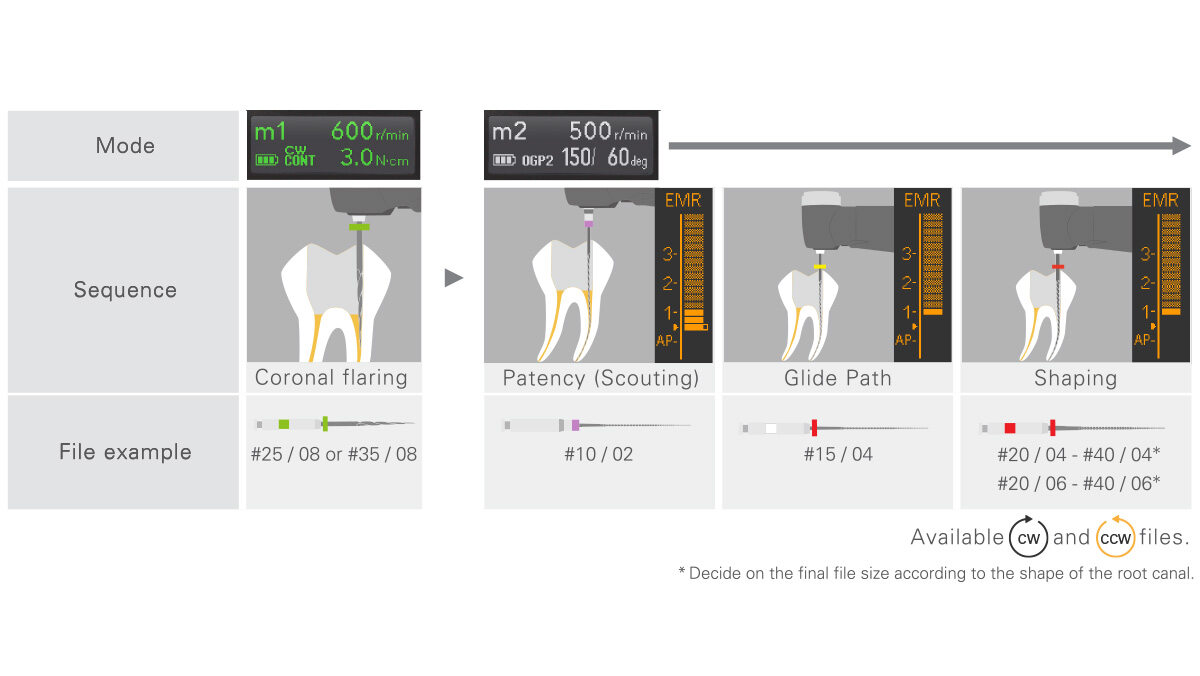
What is OTR?
OTR technology improves safety while efficiently preparing the canal. Continuous rotation is maintained until the file encounters resistance in the curved and difficult part of the canal. Depending on the file load, the motor alternates between forward and reverse rotation with great sensitivity to prevent jamming and file breakage. This function reduces the possibility of file breakage, all while contributing to shorter treatment times. OTR mode allows doctors to modify the angles for cutting according to their needs. This mode combines the cutting efficiency of continuous rotation with the safety of reciprocation. OTR is recommended for efficient shaping. OTR lowers the chance of ledge formation in curved canals and canal transportation.
Reciprocation of OTR motion improved significantly cyclic fatigue resistance of all instruments tested compared with continuous rotation (Pedullà et al., 2018).
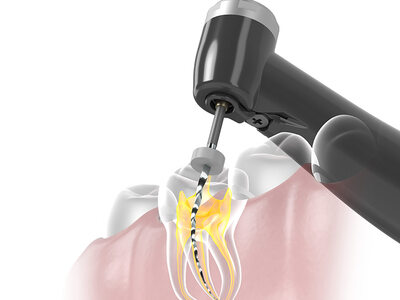
The Optimum Glide Path motion is a combination of a watch-winding and balanced force technique. Comparatively, OTR motion combines continuous cutting using clockwise (CW) or counterclockwise (CCW) rotation with reciprocating motion when needed to reduce the chance of file breakage.

(Gambarini et al, 2018)
Schematic representation of four cycles of each tested kinematics: (a) Continuous rotation; (b) OTR (Optimum Torque Reverse) set at 180°; OGP (Optimum Glide Path) set at 90° (c) and 240° (d). The yellow triangle in the center of each image represents the starting point of the movement and the black arrows indicate the exact point where the following cycle of the kinematics starts. The green colour represents a motion in a clockwise (CW) direction. The red indicates the counterclockwise (CCW) direction. The blue arc represents one alternate reciprocation with exact same angles (CW and CCW). Each grey line represents a 30° angle. (Gambarini et al, 2018)
More safety features
(All modes allow users to set their individual preferences)
Apex Location (Apex location can be performed with all modes)
The Tri Auto ZX2+ has multiple safety features that utilize the Root ZX’s proven accuracy, reducing the chance of over-instrumentation of the root canal. Its integrated apex locator continuously monitors the file’s position throughout treatment. This feature is capable of high-precision detection without being affected by dry or wet canals.
EMR (Motor does not operate in this mode)
EMR uses the apex location technology from the Root ZX to determine the working length of a canal. This technology has been relied on by endodontic enthusiasts for over 30 years and has been independently evaluated at a 97.5% accuracy rate.
Auto Start/Stop
The automatic stop feature of the Tri Auto ZX2+ makes endodontic treatment more efficient and safer. When the file reaches the end of the working length, the apex locator function triggers the automatic stop feature and halts the motor. The motor can be started and stopped when the file is inserted into the canal and stops it when it is removed. Since the motor stops as soon as the file reaches the apical constriction, the chance of perforation is reduced. The display will show the file’s position inside the canal.
OAS (Optimum Apical Stop) /OAS2 (Optimum Apical Stop2)
The Optimum Apical Stop (OAS) feature works by reversing slightly when the file comes close to the apex. This functions to reduce the possibility of file jamming and separation.
Auto Torque Reverse
The Auto Torque Reverse was first used in our Tri Auto ZX (1996). Since the torque acting on the file can be measured, the file’s rotation reverses automatically upon reaching a specific torque.
Apical Slow Down
One of the Tri Auto ZX2+’s additional safety features is Apical Slow Down. It works by reducing the file’s rotation speed as it approaches the apex. Apical Slow Down simulates the feeling of hand filing while also reducing the chance of file breakage.

For doctors who are new to the Tri Auto ZX2+, check out our basic usage guide.
If you are interested in improving cutting efficiency, check out the advanced usage guide.
Key Takeaways
The Tri Auto ZX2+’s OGP2 mode is a game changer, shortening treatment times by allowing you to focus on treatment rather than settings. This mode allows you to perform patency, glide path, and shaping all in one setting. This will allow you to finish treatment with greater efficiency and safety, all while reducing the possibility of file breakage! Additionally, with no limits on file size or cutting direction, your current file system is compatible.
This lightweight endo motor combines state-of-the-art intelligent technology with impressively easy handling. OGP2 (Optimum Glide Path 2), OTR (Optimum Torque Reverse) and OAS2 (Optimum Apical Stop 2) support a high standard of safety in endodontics. Increase patient comfort through shorter and smoother treatments by optimizing your workflows with the Tri Auto ZX2+!
References
Gambarini, G., Piasecki, L., Miccoli, G., Gaimari, G., Di Giorgio, R., Di Nardo, D., Azim, A. A., & Testarelli, L. (2019). Classification and cyclic fatigue evaluation of new kinematics for endodontic instruments. Australian Endodontic Journal, 45(2), 154–162. https://doi.org/10.1111/aej.12294
Liu, J., Zhou, Z., Tseng, W. J., & Karabucak, B. (2021). Comparison of canal transportation and centering ability of manual K-files and reciprocating files in glide path preparation: a micro-computed tomography study of constricted canals. BMC Oral Health, 21(1). https://doi.org/10.1186/s12903-021-01440-3
Pedullà, E., Corsentino, G., Ambu, E., Rovai, F., Campedelli, F. L., Rapisarda, S., La Rosa, G., Rapisarda, E., & Grandini, S. (2018). Influence of continuous rotation or reciprocation of Optimum Torque Reverse motion on cyclic fatigue resistance of nickel-titanium rotary instruments. International Endodontic Journal, 51(5), 522–528. https://doi.org/10.1111/iej.12769
Pedullà, E., G, L., La Rosa, G., Gueli, A., Pasquale, S., Plotino, G., & Rapisarda, E. (2019). Cutting efficiency of conventional and heat‐treated nickel–titanium rotary or reciprocating glide path instruments. International Endodontic Journal, 53(3), 376–384. https://doi.org/10.1111/iej.13224




